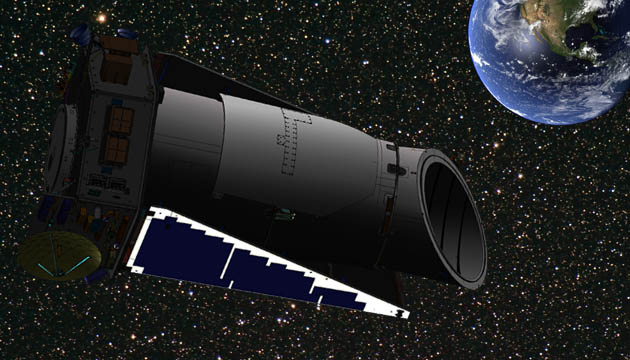Is NASA’s Kepler spacecraft, that amazing extrasolar-planet-spotter in the sky, down for the count? No one’s said definitively, but that seems to be the tone of the conversation from those who know best.
Kepler, that giant space-borne camera that has been staring at a patch of 150,000 stars in Cygnus for the past few years, has encountered technical problems with its reaction wheels. These reaction wheels are somewhat like gyroscopes: heavy disks spun with electric motors, and by speeding up or slowing down their spin the rest of the spacecraft can be turned this way and that, or kept pointing steadily in a desired direction—a function critical to all telescopes that need to point continuously at a specific spot in the sky.
It’s like a plot twist from a sci-fi thriller movie or TV series cliff-hanger: NASA’s Kepler spacecraft, after searching doggedly for a habitable extrasolar planet for the last few years, is just about to reveal the presence of another Earth, when suddenly a malfunction shuts it down, snatching potentially one of the most Earth-shaking discoveries of all time right out from under us!
“I’ve gathered you all here to reveal the identity of the mystery person. It is none other than…we regret to inform you that the show has just been cancelled….”
So, the back story is Kepler was launched to search for Earth-sized planets orbiting their stars within their habitable zones, just the right distance so that temperatures are moderate enough for liquid water to exist on the surface. Much more difficult to detect than the first exoplanets we began finding—so called “Hot Jupiters”—Earth analogs are much smaller and orbit their stars far less frequently.
